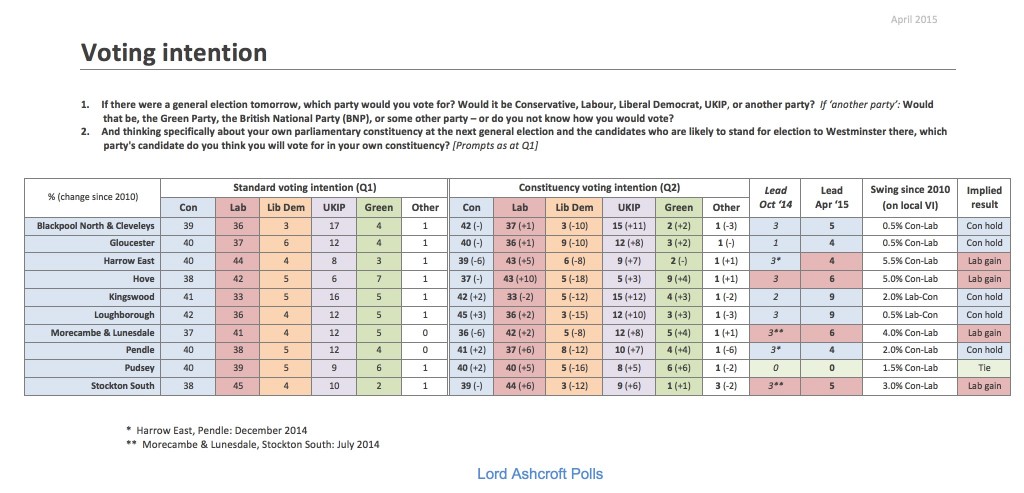
In my latest round of battleground polling I have returned to ten Conservative-held seats where Labour are the main challengers, and in which I found very close races when I polled them last year. In the previous round there was a small Tory lead in six (Blackpool North & Cleveleys, Gloucester, Harrow East, Kingswood, Loughborough and Pendle), a small Labour lead in three (Hove, Morecambe & Lunesdale and Stockton South) and a tie in one (Pudsey).
The most notable movement across the board in this round of polling was a move towards the two main parties at the expense of UKIP, something I also found in the Liberal Democrat battleground last week. In this group of ten seats, the UKIP share had fallen significantly – by up to ten points – in nine of the ten seats polled.
In only one seat did I find the lead had switched between parties – Harrow East, where a three-point Conservative lead in December had become a four-point lead for Labour. Elsewhere, both Labour and the Tories had consolidated their positions in seats where they had previously led. Pudsey remained tied – though with both parties on 40%, up from 36% in October.
In two of the seats where I found a Labour lead – Hove and Stockton South – the Conservative vote share was exactly the same as at the 2010 election. Lib Dem switchers to Labour account for the new state of play. In the four seats with a Labour advantage, the proportion preferring Ed Miliband to David Cameron as Prime Minister was as low as 27% (Harrow East); it was highest in Hove (38%).
Most people said they had had literature, direct mail, phone calls or visits from both main parties, but Labour have the edge in these local campaigns on the basis of this evidence. More than 70% had heard from Labour in half the seats polled.



